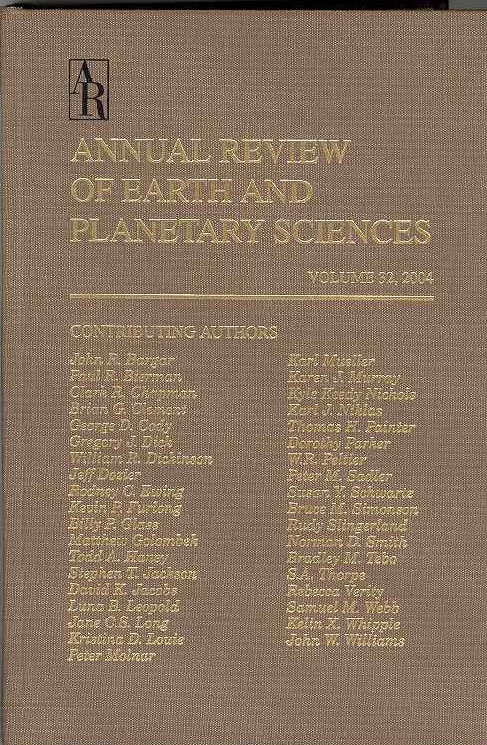火山、气候和社会
IF 13
1区 地球科学
Q1 ASTRONOMY & ASTROPHYSICS
Annual Review of Earth and Planetary Sciences
Pub Date : 2025-06-25
DOI:10.1146/annurev-earth-032524-013254
引用次数: 0
摘要
这篇综述考察了大型火山爆发的社会后果——不是熔岩、火山灰、浮石和气体排放的近端影响,而是火山硫酸盐气溶胶在平流层扩散引发的气候强迫的后果。利用火山活动的冰芯记录和夏季温度异常的树木年轮数据,我们分析了38次工业前喷发,这些喷发向平流层注入了大约6 Tg或更多的硫。然后,我们探索了100多部考虑火山-气候-社会关系的作品,梳理出他们支持或反对火山强迫气候变化在远场社会影响中的作用的关键因素。除了总结和询问关于这一主题的思想和现状的历史,我们希望激发进一步的整体,跨学科的方法来评估火山爆发的更广泛的影响,特别是对过去和未来的全球粮食安全的影响。■有令人信服的论据表明,火山喷发导致的气候变化在解释历史时所起的作用。▪此类研究需要将地理、生态、人口、计量经济学和其他数据与历史来源和叙述相结合,因此需要跨学科的对话。▪将极端天气和气候归因于火山强迫需要统计证据,农业和畜牧业对气候异常的反应必须以高时空分辨率重建。在公元304年、1182年、1345年和1453年前后发生的几次突出的气候强迫喷发迄今为止受到的关注相对较少。本文章由计算机程序翻译,如有差异,请以英文原文为准。
Volcanoes, Climate, and Society
This review examines the societal ramifications of large volcanic eruptions—not the proximal impacts of lava, ash, pumice, and gaseous emissions but rather the consequences of the climate forcing triggered by dispersal of volcanic sulfate aerosol in the stratosphere. Using ice core records of volcanism and tree-ring data of summer temperature anomalies, we analyze 38 preindustrial eruptions that injected an estimated 6 Tg or more of sulfur into the stratosphere. We then explore more than 100 works that consider the volcanism-climate-society nexus, teasing out the key elements of their arguments for or against the role of volcanically forced climate change in far-field societal impacts. As well as summarizing and interrogating the history of ideas and state of the art on this topic, we hope to stimulate further holistic, interdisciplinary approaches to assess the broader implications of volcanic eruptions, particularly for global food security—both in the past and in the future. ▪ There are compelling arguments to consider the role of volcanically forced climate change in explanations of history. ▪ Such research requires integration of geographical, ecological, demographic, econometric, and other data with historical sources and narratives, and therefore demands cross-disciplinary conversation. ▪ Statistical evidence is needed to attribute weather and climate extremes to volcanic forcing, and agricultural and pastoral responses to climate anomalies must be reconstructed at high spatiotemporal resolution. ▪ Several prominent climate forcing eruptions in circa 304, 1182, 1345, and 1453 CE have hitherto received comparatively little attention.
求助全文
通过发布文献求助,成功后即可免费获取论文全文。
去求助
来源期刊

Annual Review of Earth and Planetary Sciences
地学天文-地球科学综合
CiteScore
25.10
自引率
0.00%
发文量
25
期刊介绍:
Since its establishment in 1973, the Annual Review of Earth and Planetary Sciences has been dedicated to providing comprehensive coverage of advancements in the field. This esteemed publication examines various aspects of earth and planetary sciences, encompassing climate, environment, geological hazards, planet formation, and the evolution of life. To ensure wider accessibility, the latest volume of the journal has transitioned from a gated model to open access through the Subscribe to Open program by Annual Reviews. Consequently, all articles published in this volume are now available under the Creative Commons Attribution (CC BY) license.
 求助内容:
求助内容: 应助结果提醒方式:
应助结果提醒方式:


